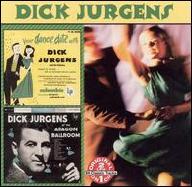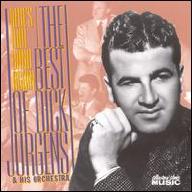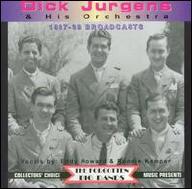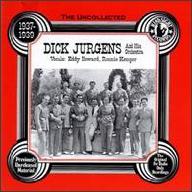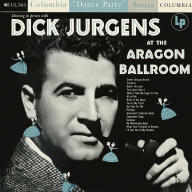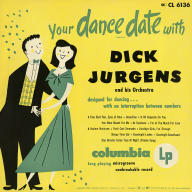From the mid-'30s to the early '40s, the Jurgens band played extended residences at such venues as the Casino Ballroom on Catalina Island in southern California, the Elitch Gardens in Denver, and the Aragon and Trianon ballrooms in Chicago, all bastions of sweet swing music. By 1938, Jurgens was recording for the Vocalion label, and in 1939 he began to make some impact as a record seller, first getting into the rankings on the #Your Hit Parade radio show that October with It's a Hundred to One You're in Love With Me (co-written by Jurgens and band member Ronnie Kemper), which featured Howard on vocals. Jurgens, Howard, and band arranger Lew Quadling collaborated on Careless, which they submitted to the Irving Berlin publishing company. The story goes that Berlin didn't like the lyrics, but hesitated to offend a major bandleader, so he wrote new words without taking credit. The Jurgens band recorded the song with Howard on vocals, but their version was outpaced by a cover recorded by the vastly more popular Glenn Miller -- not the last time such a thing would occur -- and no problem for Jurgens, who pocketed the publishing income. Meanwhile, Jurgens was scoring his biggest hit yet with a song he did not write, In an Old Dutch Garden (By an Old Dutch Mill), which, with another Howard vocal, spent 11 weeks on the hit parade starting in February 1940. Howard then left the band to start his own outfit, but Jurgens found a worthy replacement in Harry Cool, who sang on the band's next hit parade entry, A Million Dreams Ago (music and lyrics by Jurgens, Howard, and Quadling) in October. (The single also marked the band's switch to OKeh Records.) The same month, Jurgens got into the best-seller charts with an instrumental recording of another song he had co-written, Elmer's Tune (music also by Elmer Albrecht). Once again, Glenn Miller outdid him, taking a vocal recording that featured Ray Eberle and the Modernaires all the way to number one, and, once again, Jurgens had no reason to complain; he had even responded to Miller's request by hiring Sammy Gallop to write lyrics. He and Harry Cool were back in the hit parade in November with The Bells of San Raquel, and the band scored another chart entry in April 1942 with Happy in Love (which marked a switch to Columbia Records). But Jurgens' biggest song on #Your Hit Parade came with One Dozen Roses (music by Jurgens and Walter Donovan, lyrics by Roger Lewis and Country Washburn), which was sung by Buddy Moreno. Premiering on the radio show in May 1942, it rose to number one in July and stayed on the chart for 14 weeks.
Arguably, Jurgens was at the peak of his career in mid-1942. Just then, the recording ban by the American Federation of Musicians prevented him from making further recordings, and at the same time, he disbanded and joined the U.S. Marine Corps to participate in World War II. He remained with the service through the end of the war in 1945, serving as musical director for Marine shows. He reorganized his band in 1946 and went back to work, albeit in a musical climate that was less conducive to his kind of musical approach. Nevertheless, he continued recording for Columbia through the early 1950s, later switching to Mercury. From July to September 1948, he had a half-hour weekly radio berth on CBS, the #Summer Spotlight Revue. He married Miriam Davidson on December 6, 1948.
As the popularity of swing diminished, he continued leading his band until 1956, when he gave it up and started an electronics business in Colorado Springs, CO with his brother, though he continued to perform occasionally at the local Broadmoor Country Club. In 1965, he relocated to California and began to make occasional appearances. By the late '60s he had reformed his band, and he played with it part-time until 1976, even making some new recordings in the early '70s. Then he left the music business again, returning home to Sacramento, where he got into real estate. In 1986, he sold the rights to his band's name to singer Don Ring. He died of cancer at 85. ~ William Ruhlmann, Rovi


